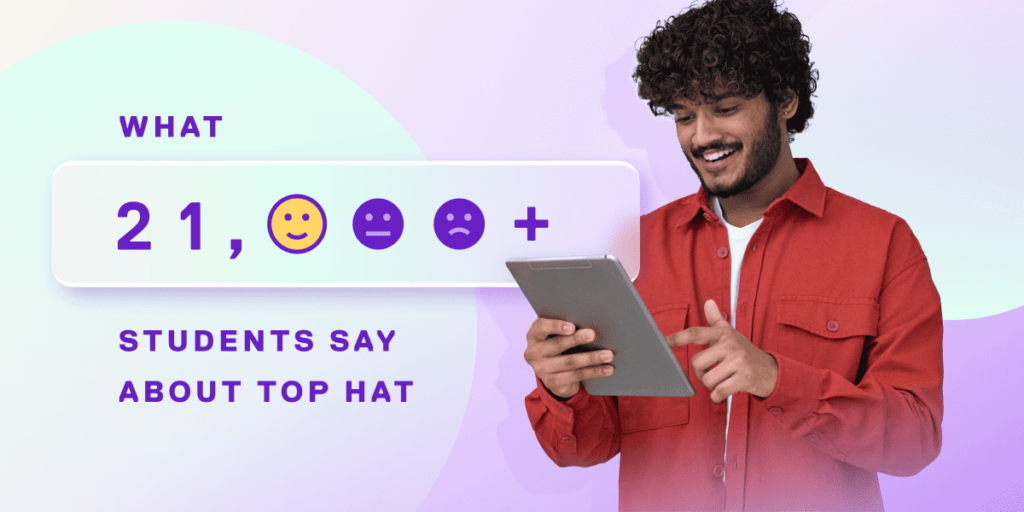The academic year is well underway for university students across North America. Yet even at the best of times, higher education is overwhelming for many. And these are far from the best of times.
High rates of anxiety and depression are growing among our youth. According to the most recent College Confidence Index report, 40 percent of students have considered dropping out, while the overall graduation rate is 64 percent, a figure that has remained largely static for years. Even with the return to the classroom in the spring, many faculty reported poor attendance and “stunning levels of disconnection” among students.
It’s tempting to blame these challenges on the emotional effects of the pandemic, the distressing state of our world or even the quirks of a new generation. But to do so risks ignoring the urgent need to make the learning experience itself more welcoming, more engaging and better suited to preparing students for life after university.
The ultimate goal of any college course should be for students to feel part of a learning community and to experience the joy of discovery. Students should walk away with a clear sense of having learned something that will contribute to their future success. But this cannot happen if educational experiences remain inflexible or inaccessible. Nor will it be possible if students do not find the sense of belonging necessary to support the risk-taking and experimentation that is at the center of a fulfilling learning process.
The good news is we know what works
A review of more than 225 separate studies on learning found that teaching practices like active learning, which emphasizes discussions, group problem solving, and other collaborative activities, are superior to the traditional lecture-only model by almost every measure. Active learning helps build community between students and faculty through shared experience. And it is shown to not only improve learning outcomes in every discipline but to reduce or even eliminate achievement gaps for historically marginalized populations. Yet teaching practices like this have been slow to find their way into the classroom.
As educators, we understand that applying evidence-based teaching practices in a particular course context is highly nuanced. We know that to be effective, faculty and students must commit to learning together and that success in teaching is difficult to achieve at scale. And while we are sensitive to the realities of faculty life, one has only to look at current college completion rates to know that the status quo is not serving the needs of our students.
In many ways, higher education is at a similar place to the healthcare system at the turn of the 20th century. At the time, the science of medicine was maturing rapidly, yet practices remained stuck in tradition. Fast forward to today and healthcare professionals are required to demonstrate a clear commitment to evidence-based practice. Bad outcomes are publicly reviewed, mined for insight and shared widely to drive improvement. The training of healthcare workers incorporates emerging evidence and sets expectations for professionals to stay current with the latest medical knowledge.
The non-negotiables of evidence-based teaching
While this level of rigor has yet to find its way into higher education, there are basic practices that should be non-negotiable features of every course. We know frequent low stakes assessments, like in-class quizzes, not only reduce anxiety but help students focus more effectively and retain information longer. Gauging progress early and often also provides the feedback students need, and can help universities direct limited support resources to ensure more students persist in their studies.
Modern teaching practices recognize that an instructor’s value isn’t in delivering a lecture that repeats what is already in the textbook or that can be just as easily watched on video. Real value emerges when instructors work directly with students to solve problems, coach and mentor, and connect learning to what’s happening outside the classroom. More collaborative classrooms also cultivate the sense of community and belonging that is so important to academic success.
Engagement is not guaranteed, and the challenge of engaging students is real. Doctors will tell you that they struggle to get patients to do what is necessary to become healthier, too. Unsurprisingly, the medical profession is focused on discovering how to improve in that area.
Better insight, better learning
Just as technology continues to drive healthcare forward, data generated by classroom learning technologies is now enabling educators to apply the same spirit of rigorous investigation to the practice of teaching. Many of today’s teaching and learning platforms automatically capture attendance, participation, homework completion and weekly quiz results, providing insights instructors can use to connect with and motivate students. This data can also be used to better meet the needs of individual learners, improve course delivery and demonstrate the value of what we are providing our students.
WIth pressure growing to improve academic performance and completion rates, waiting for exam results is usually too little, too late. Professors need the data and tools to adapt to student needs and improve learning outcomes on the fly. The willingness to experiment, test and experiment again will also help shed the old perceptions of ‘sink or swim,’ creating learning environments that better support student needs, enabling all boats to rise with the tide.
Like many of our public institutions, higher education is suffering from a growing pessimism regarding its value. Students, parents and employers are demanding better. And just like the healthcare industry, improving upon the status quo requires a shared commitment to using evidence-based teaching to improve outcomes. The students entering university life for the first time are bringing more challenges than ever. And given the pace of change in our world, they will need to learn throughout their lifetimes. They are our collective future. Let’s get serious about leveraging the best available evidence to teach them.
Brad Cohen is the Chief Academic Officer at Top Hat
John Talbott is a Senior Faculty Member at Indiana University’s Kelley School of Business


